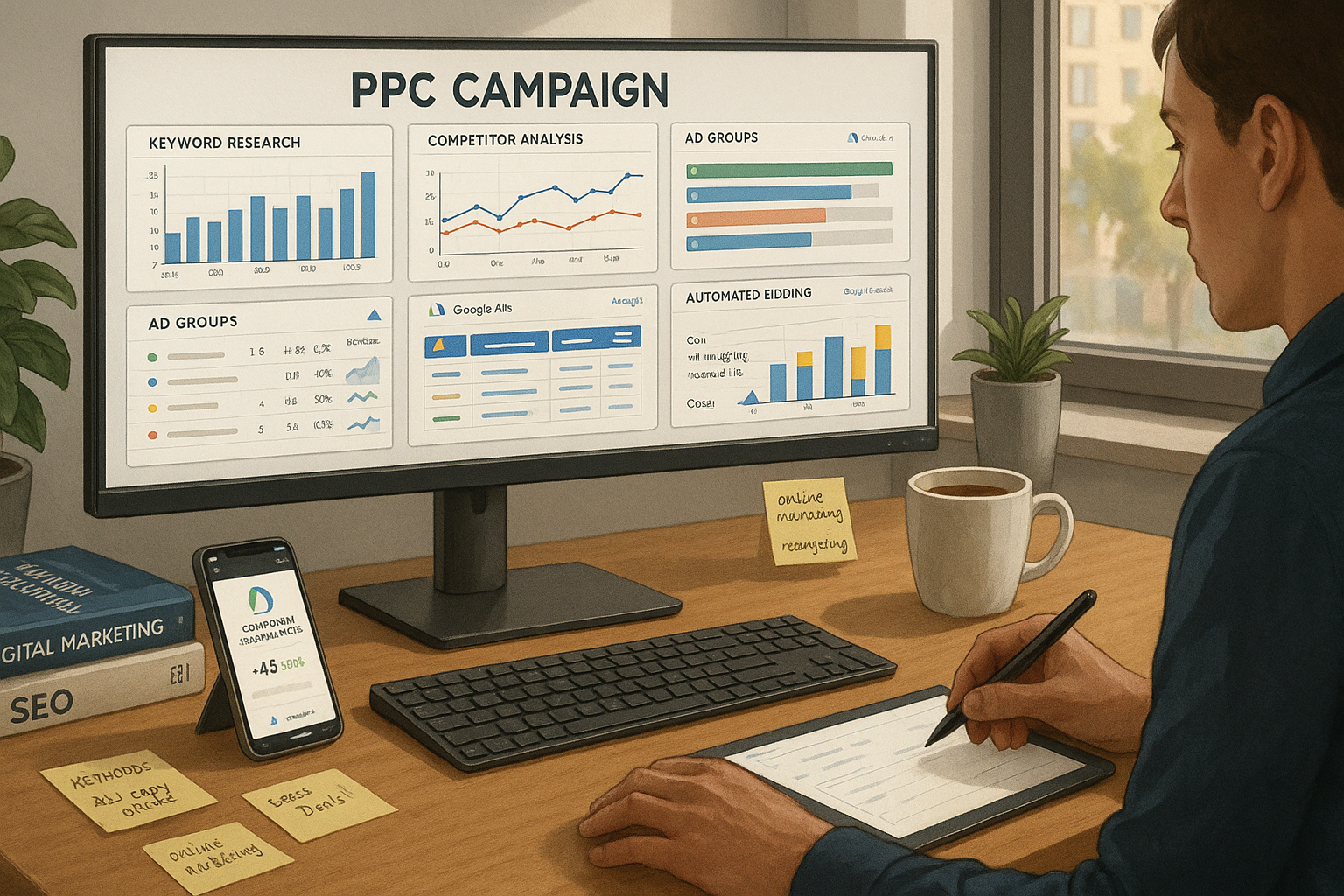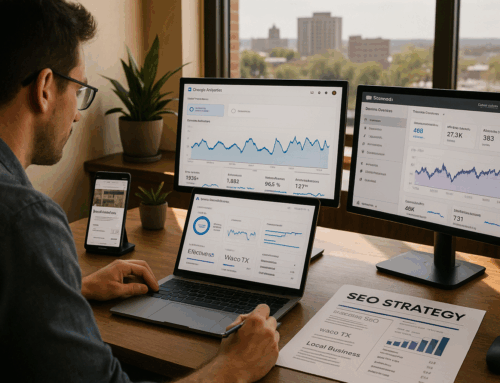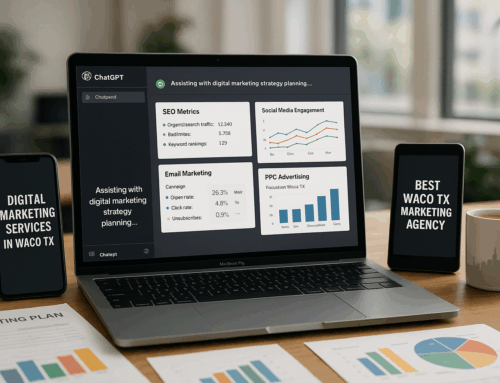Understanding the Foundations of PPC Campaigns
We’ve all heard about pay-per-click advertising, but truly mastering PPC campaigns takes more than just setting up ads. It’s about understanding the core components that drive successful outcomes. At its heart, a PPC campaign involves bidding on keywords so your ads show up when people search for those terms. But the magic lies in targeting the right audience, choosing the right keywords, and crafting an appealing ad copy that compels clicks.
One of the first things we focus on is thorough keyword research. Not every keyword has the same value. Some bring in high traffic but at a steep cost, while others offer less volume but highly targeted prospects. We use tools like Google Keyword Planner and SEMrush to identify a mix of high-intent and long-tail keywords. This balance helps us capture a broader audience while managing costs effectively.
Another foundational aspect is understanding your competitors. We monitor which keywords competitors bid on and analyze their ad strategies. This competitive insight informs how we differentiate our ads, find gaps, and ensure our clients’ campaigns don’t just blend into the crowd.
Finally, the landing page experience is crucial. We’ve seen that no matter how good the ad is, if the landing page isn’t optimized to convert visitors, campaign success will suffer. Fast load times, clear calls to action, and seamless mobile experience are non-negotiable parts of our PPC strategy.
Crafting Ads That Drive Engagement and Clicks
Creating ads for PPC campaigns isn’t just about throwing keywords into text. We focus on writing compelling copy that resonates with the target audience’s needs and desires. Our approach includes:
– Clear headlines that incorporate the focus keywords naturally
– Unique selling points that differentiate the product or service
– Strong calls to action that encourage immediate clicks
We also experiment with ad extensions like site links, call buttons, and location info. These enhance visibility and provide users with more ways to interact, often improving click-through rates significantly.
To illustrate, one client in the e-commerce space saw a 25% uplift in clicks after we implemented site link extensions directing users to best-selling categories alongside the main ad. This kind of strategy, combined with precise keyword targeting, ensures that the ads aren’t just seen but drive meaningful engagement.
Testing is a big part of our process. We run A/B tests on headlines and descriptions, analyzing data closely to determine which version performs better. This data-driven approach lets us optimize continuously and get the most out of every ad dollar spent.
Optimizing Campaign Structure for Better Performance
An often overlooked factor in PPC campaigns’ success is the campaign structure itself. We have found that well-organized campaigns make optimization and scaling much easier. Here’s how we break it down:
1. Campaigns by Theme: We segment campaigns based on product lines, services, locations, or customer segments. This organization improves targeting and reporting clarity.
2. Ad Groups by Keyword Intent: Within each campaign, ad groups contain closely related keywords. This helps in writing highly relevant ads, improving Quality Score, and reducing cost per click.
3. Negative Keywords: We meticulously maintain a list of negative keywords to filter out irrelevant searches. For example, excluding “free,” “jobs,” or “DIY” terms if not aligned with the client’s goals can save budget and increase conversion rates.
Monitoring performance metrics like click-through rate (CTR), conversion rate, and cost per acquisition (CPA) are central to our optimization process. We leverage conversion tracking and Google Analytics to gain insights into what’s working and what needs adjustment. This data-driven approach allows us to pause underperforming ads or increase bids on high performers, making the campaign more efficient.
Leveraging Automation and Smart Bidding
In today’s PPC landscape, manual bidding can only take you so far. We have embraced automated bidding strategies such as Target CPA or Maximize Conversions provided by platforms like Google Ads. These algorithms analyze historical data and auction-time signals to optimize bids dynamically.
Using automation frees up time, allowing us to focus more on strategic elements like ad copy and landing page optimization. However, we always keep a close eye on these automated campaigns to ensure they align with client goals and adjust parameters if needed.
Measuring Success and Scaling Your PPC Campaigns
Launching a PPC campaign is just the beginning. Success depends on ongoing measurement and smart scaling. We track key performance indicators closely, including impressions, CTR, conversion rate, and return on ad spend (ROAS). This comprehensive view helps us identify bottlenecks and opportunities.
To scale effectively, we often start by increasing budgets on top-performing campaigns incrementally, rather than across the board. This targeted approach prevents overspending and maintains efficient use of ad spend.
Another technique we’ve found useful is expanding keyword lists based on successful search queries discovered during the campaign. For example, if a certain long-tail keyword is driving high-quality traffic, we add it as a separate ad group to maximize its potential.
We also use remarketing to re-engage users who’ve visited a website but haven’t converted yet. By showing tailored ads to this audience, we improve conversion chances significantly with relatively low additional cost.
Utilizing Analytics for Continuous Improvement
Analyzing campaign data is more than just tracking numbers. We dive deep into user behavior on landing pages, bounce rates, and session durations to understand the entire customer journey. Tools like Google Analytics combined with PPC reporting dashboards give us a full picture of performance.
Sharing these insights with clients helps align marketing efforts with business objectives. We also conduct regular reviews and strategy sessions to refine targeting, messaging, and budget allocation.
For more insights into PPC and digital marketing strategies, resources like WordStream’s PPC guide (https://www.wordstream.com/ppc) can be highly valuable.
Unlocking the secrets of successful PPC campaigns requires commitment to testing, learning, and adapting. By combining solid foundations, compelling ad creation, intelligent campaign structuring, and data-driven optimization, we’ve helped numerous campaigns exceed their goals. If you’re ready to take your PPC advertising to the next level, we’re available to help you craft a winning strategy. Contact us today at https://sithmarketing.com and let’s unlock your campaign’s full potential together.








Leave A Comment